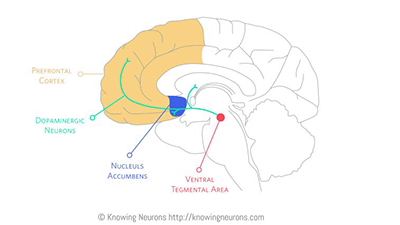How does the brain react to 'beauty'?

Since the dawn of history, humankind has been drawn to beautiful things and has been passionate about pursuing beauty. However, little is known about how humans perceive 'beauty' even in modern modern science. The American scientific journal Scientific American explains, 'How far has the mechanism by which the human brain captures beauty been elucidated?'
Seeking the “Beauty Center” in the Brain: A Meta-Analysis of fMRI Studies of Beautiful Human Faces and Visual Art | SpringerLink
https://link.springer.com/article/10.3758/s13415-020-00827-z
How the Brain Responds to Beauty --Scientific American
https://www.scientificamerican.com/article/how-the-brain-responds-to-beauty/
In his 1896 book, The Sense of Beauty, American philosopher George Santayana said, 'For humans, the desire to observe and value beauty is very fundamental and widespread. There is a tendency. ' As Santayana points out, people want beauty not only in art and nature, but also in furniture and smartphone design.
Gustav Fechner , a German psychologist who is called 'the pioneer of experimental psychology and physiological psychology and the founder of psychophysics,' tried to unravel the relationship between aesthetics and the brain in a scientific way. One of the first researchers.
Fechner, who was devoted to the study of external psychophysics at the time, proved in an experiment conducted in 1876 that 'people prefer the golden rectangle.' Fechner is said to have been convinced that 'beauty is in the human brain' throughout his life.
If Fehner believed, there should be some peculiar reaction in the human brain that sees beautiful things. Therefore, a research team at Tsinghua University in China is conducting research to examine the brains of people who see beautiful things and see what kind of activities and changes are occurring. A total of 982 subjects were analyzed forty-nine studies using a technique called Activation Likelihood Optimization (ALE) that cross-sectionally examines the results of multiple experiments.
As a result, there are two 'beauty' in the human brain: the left ventral striatum that activates when you see a 'beautiful face' and the anteromedial prefrontal cortex (amPFC) that activates when you see a 'beautiful work of art'. It turns out that there is a 'Beauty Center'.

Regarding the results of this study, Scientific American said, 'If we accept this result as it is, the beauty of the face and the beauty of the painting are not the same. That is, beauty has multiple forms, is diverse, and is special in the subject. It's something that's built into sex. '
On top of that, 'neuroscientists and physiologists studying beauty may need to continue their research for years, and perhaps generations, to reach truly compelling findings. Maybe, one thing is certain: beauty temptation will continue to be a fascinating, interesting and adventurous issue for us until beauty is fully elucidated. '
Related Posts:







